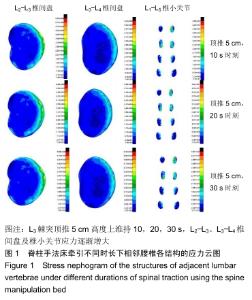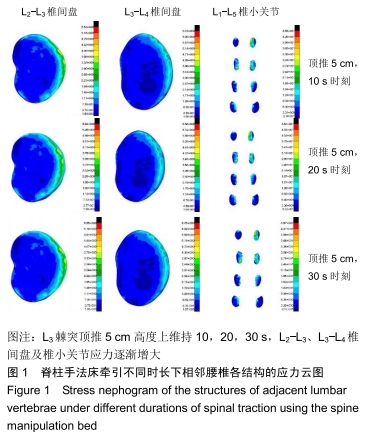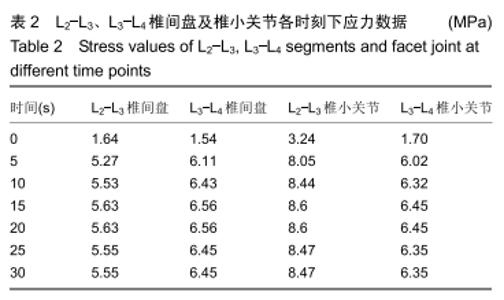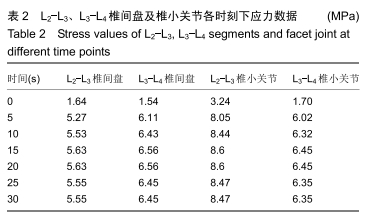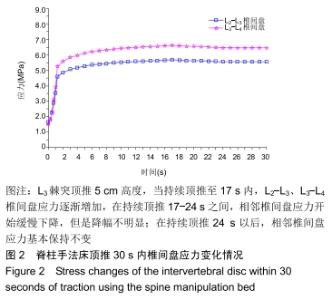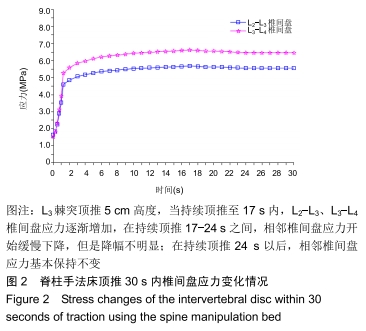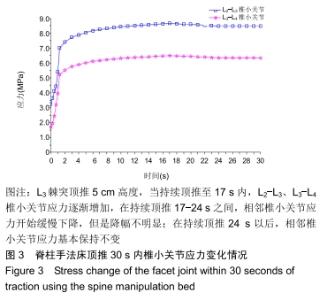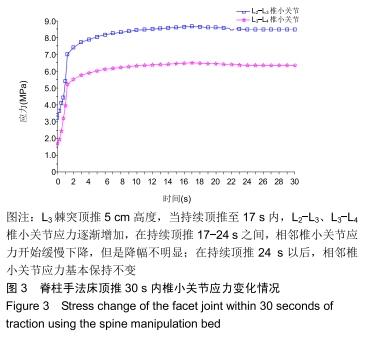[1] 张大勇,张凌岚.功夫整脊[M].福建科学技术出版社,2011:31.
[2] MCMAINS MC, JAIN N, MALIK AT, et al.A biomechanical analysis of lateral interbody construct and supplemental fixation in adjacent-segment disease of the lumbar spine.World Neurosurg. 2019. pii: S1878-8750(19)31234-3.
[3] CHANG MY, PARK Y, HA JW, et al. Paraspinal lean muscle mass measurement using spine mri as a predictor of adjacent segment disease after lumbar fusion: a propensity score-matched case-control analysis. AJR Am J Roentgenol. 2019:1-8.
[4] 黄云鹏,门玉涛,刘海英,等.椎板切除对腰椎融合后邻近节段生物力学的影响[J].医用生物力学,2018,33(6):564-571.
[5] FAN W, GUO LX. Biomechanical comparison of nucleotomy with lumbar spine fusion versus nucleotomy alone: vibration analysis of the adjacent spinal segments. International Journal of Precision Engineering and Manufacturing. 2018; 19(10):783-786.
[6] 贺鑫,李民,陈立典,等.一种脊柱牵伸床的研制[J].中国医疗设备,2014,29(10):35-37.
[7] 陈立典.多层气柱式脊柱垫的脊柱牵伸气柱手法CN201410015409.0[P]. 2014-04-09. https://kns.cnki.net/kns/brief/result.aspx?dbprefix=SCOD
[8] 陈立典.多层气柱式脊柱垫的气柱控制结构CN201410015433.4[P]. 2014-04-09. https://kns.cnki.net/kns/brief/result.aspx?dbprefix=SCOD
[9] 陈立典.多层气柱式脊柱垫及其应用方法CN201410015518.2[P]. 2014-04-02. https://kns.cnki.net/kns/brief/result.aspx?dbprefix=SCOD
[10] 陈立典,李民.一种可个性化调节曲度的分段式脊柱牵伸床:中国, CN201610948100.6[P]. 2017-03-22. https://kns.cnki.net/kns/brief/result.aspx?dbprefix=SCOD
[11] 陈立典,贾小飞,李民.分段式脊柱牵伸床用可个性化调节曲度的三维气垫结构:中国,CN201610956475.7[P].2017-01-25. https://kns.cnki.net/kns/brief/result.aspx?dbprefix=SCOD
[12] 陈立典,李民.可个性化调节曲度分段式脊柱牵伸床的三维动作控制装置:中国,CN201610956498.8[P].2017-02-22. https://kns.cnki.net/kns/brief/result.aspx?dbprefix=SCOD
[13] KERIN AJ, WISNOM MR, ADAMS MA. The compressive strength of articular cartilage.Proc Inst Mech Eng H. 1998; 212(4):273-280.
[14] 周灵.脊柱手法床模拟南少林倒盖金被手法对正常腰椎应力的影响[D].福州:福建中医药大学, 2018.
[15] 苏晋.腰椎有限元模型的建立与生物力学分析[D].大连:大连医科大学,2016.
[16] 邓海峰.腰骶椎三维有限元建模及三种内固定方式生物力学分析[D].沈阳:中国医科大学, 2011.
[17] 沈永乐.新型腰椎后路动态内固定系统固定腰椎滑脱有限元分析[D].沈阳:中国医科大学,2012.
[18] LO CC, TSAI KJ, ZHONG ZC, et al.Biomechanical differences of Coflex-F and pedicle screw fixation combined with TLIF or ALIF--a finite element study. Comput Methods Biomech Biomed Engin. 2011;14(11):947-956.
[19] YAMAMOTO I, PANJABI MM, CRISCO JJ, et al. Three-dimensional movements of the whole lumbar spine and lumbosacral joint. Spine.1989;14(11):1256-1260.
[20] PANJABI MM, OXLAND TR, YAMAMOTO I, et al. Mechanical behavior of the human lumbar and lumbosacral spine as shown by three-dimensional load-displacement curves.J Bone Joint Surg Am. 1994;76(3):413-424.
[21] XIAO Z, WANG L, GONG H, et al. Biomechanical evaluation of three surgical scenarios of posterior lumbar interbody fusion by finite element analysis. Biomed Eng Online. 2012; 11:31.
[22] Robertson DGE, Caldwell GE, Hamill J, et al. Research Methods in Biomechanics.2013.
[23] 徐海涛.腰椎手法推拿力的量化研究和有限元分析[D].广州:南方医科大学,2008.
[24] 魏晓宁,王艳,裴飞. 腰椎间盘结构、盘内压力及不同载荷的影响:生物力学研究进展[J].中国组织工程研究,2015,19(20): 3242-3247.
[25] SKALLI W, DUBOUSSET J. Intervertebral disc transplantation. Lancet.2007;369(9566):968-969.
[26] KROEBER MW, UNGLAUB F, WANG H, et al. New in vivo animal model to create intervertebral disc degeneration and to investigate the effects of therapeutic strategies to stimulate disc regeneration. Spine. 2002;27(23):2684-2690.
[27] STOLL TM, DUBOIS G, SCHWARZENBACH O. The dynamic neutralization system for the spine: a multi-center study of a novel non-fusion system. Eur Spine J. 2002;11(2 Supplement): S170-S178.
[28] TISCHER T, AKTAS T, MILZ S, et al. Detailed pathological changes of human lumbar facet joints L1-L5 in elderly individuals. Eur Spine J.2006;15(3):308-315.
[29] MANCHIKANTI L, PANMPATI RR, FELLOWS B, et al. The diagnostic validity and therapeutic value of medial branch blocks with or without adjuvants. Curr Rev Pain.2000; (4): 337-344.
[30] 闫广辉,李志赏,魏巍,等. 腰椎间盘和腰椎小关节的退变顺序及其与年龄的相关性分析[J]. 中国检验医学与临床,2018,15(6): 744-745.
[31] FARFAN HF, COSSETTE JW, ROBERTSON GH, et al. The effects of torsion on the lumbar intervertebral joints: the role of torsion in the production of disc degeneration. J Bone Joint Surg Am.1970;52(3):468.
|
